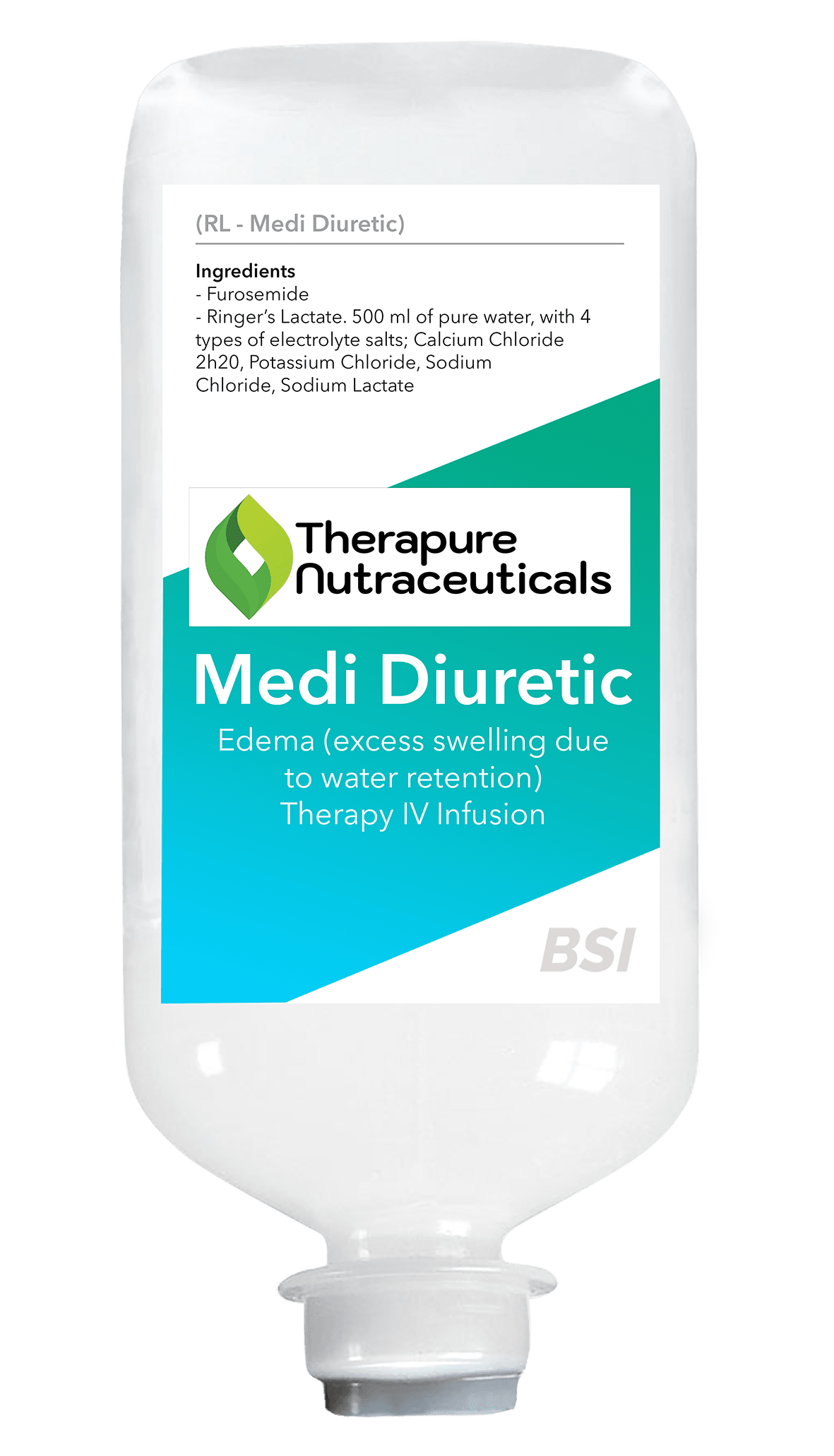1 gram / 3 grams of Vitamin C

Indications: Recommended for adult patients for the treatment of edema associated with renal disease and nephrotic syndrome, liver disease, and heart disease. Furosemide is particularly useful when an agent with greater diuretic potential is desired.
Symptoms: Subcutaneous swelling due to water retention, and the inability to urinate properly.
Prescription: Administered via IV Infusion, only after our Doctors or Nurse Practitioners have examined the patient and have determined effectiveness and dose.
Actions: Faster acting when given by IV, thus allowing replenishment of electrolytes and in prevention of dehydration due to the effects of Furosemide.
Cautions: Generally only given via IV infusion. It can become addictive, if the causes are not remedied. Do not give with Vitamin C, other vitamins, or Vita-IV infusions during the same day.
In patients with hepatic cirrhosis and ascites, furosemide therapy is best initiated under direct doctor supervision. In hepatic coma and in states of electrolyte depletion, therapy should not be instituted until the basic condition is improved. Sudden alterations of fluid and electrolyte balance in patients with cirrhosis may precipitate hepatic coma; therefore, strict observation is necessary during the period of diuresis. Supplemental potassium chloride and, if required, an aldosterone antagonist are helpful in preventing hypokalemia and metabolic alkalosis.
Cases of tinnitus and reversible or irreversible hearing impairment and deafness have been reported. Reports usually indicate that furosemide ototoxicity is associated with rapid injection, severe renal impairment, the use of higher than recommended doses, hypoproteinemia or concomitant therapy with aminoglycoside antibiotics, ethacrynic acid, or other ototoxic drugs. If the physician elects to use high dose parenteral therapy, controlled intravenous infusion is advisable (for adults, an infusion rate not exceeding 4 mg furosemide per minute has been used).
Excessive diuresis may cause dehydration and blood volume reduction with circulatory collapse and possibly vascular thrombosis and embolism, particularly in elderly patients. As with any effective diuretic, electrolyte depletion may occur during furosemide therapy, especially in patients receiving higher doses and a restricted salt intake. Hypokalemia may develop with furosemide, especially with brisk diuresis, inadequate oral electrolyte intake, when cirrhosis is present, or during concomitant use of corticosteroids, ACTH, licorice in large amounts, or prolonged use of laxatives. Digitalis therapy may exaggerate metabolic effects of hypokalemia, especially myocardial effects.
WhatsApp us